The art of navigating with a map and compass remains a vital skill for outdoor enthusiasts in a time dominated by digital navigation tools. This traditional method is a reliable backup in areas devoid of GPS signals and enriches the outdoor experience by fostering a deeper understanding and connection with the landscape. Learning to navigate traditionally hones your observation skills, enhances spatial awareness, and instills confidence and self-reliance in remote settings. This guide explores the essential aspects of map and compass navigation, covering everything from reading topographic maps to understanding magnetic declination to empower your adventures in the great outdoors.
History of Maps

Image Credit: Shutterstock / Jaroslav Francisko
The history of maps dates back to ancient civilizations, with the earliest known maps being symbolic representations of areas for religious or conceptual purposes. The Babylonians created some of the earliest known maps on clay tablets around the 6th century BCE, depicting the Earth as a flat disk. As exploration expanded, so did mapmaking. The Greeks and Romans advanced cartography, with figures like Anaximander and Ptolemy contributing significantly to the field. Ptolemy’s work in the 2nd century CE, including the concept of latitude and longitude, laid the foundation for modern cartography.
The Age of Exploration in the 15th and 16th centuries marked a significant leap in mapmaking, driven by European explorers’ voyages across the oceans. This era created more accurate and detailed maps, facilitating further exploration and colonization. The 17th and 18th centuries, known as the Golden Age of Cartography, saw maps becoming increasingly precise and artistic, with advancements in measuring techniques and a better understanding of geography.
History of Compasses
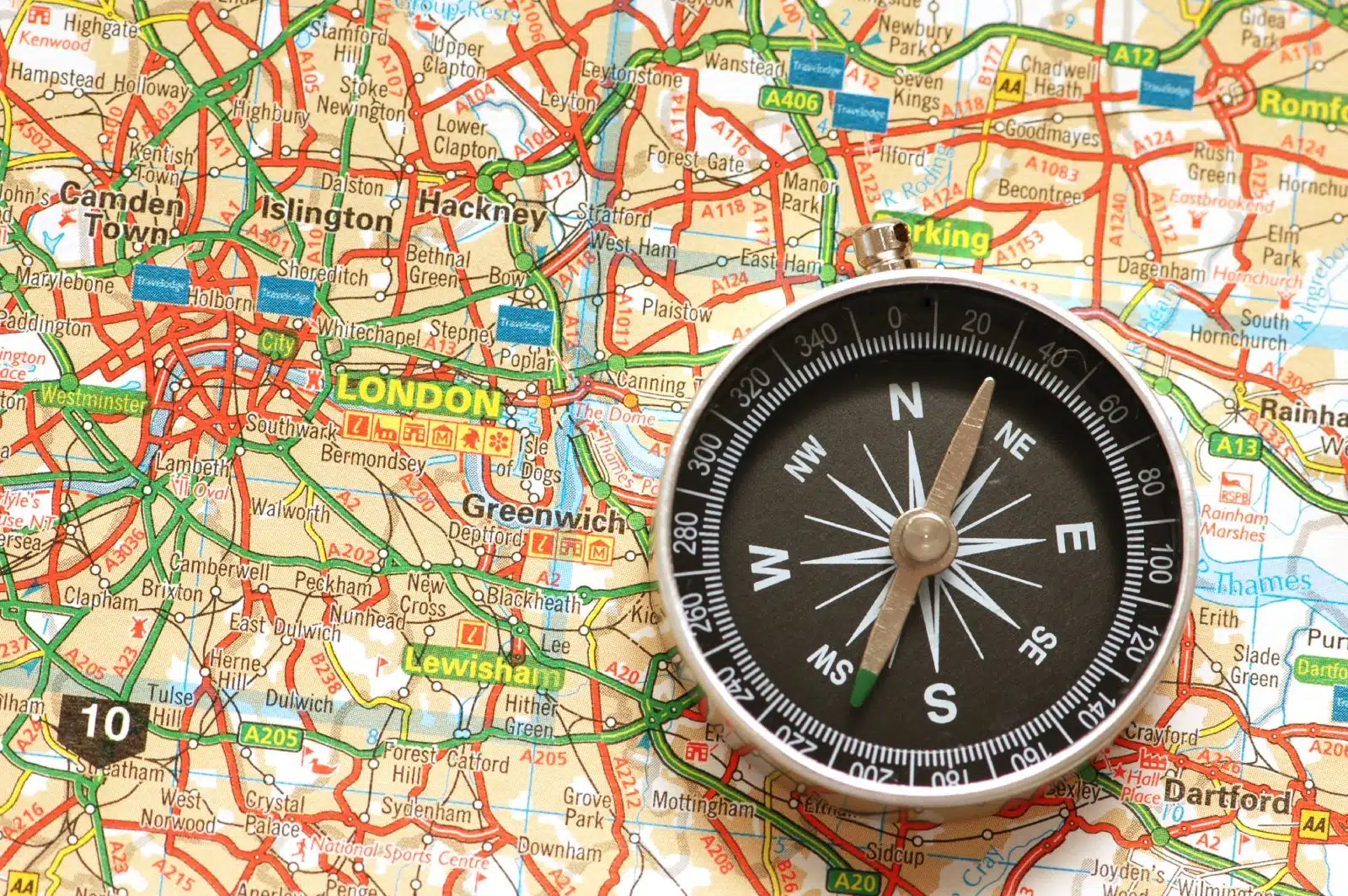
Image Credit: Shutterstock / Elnur
The compass, an instrument crucial for navigation, originates in ancient China during the Han Dynasty (206 BCE – 220 CE), initially used for divination and feng shui. The magnetic compass, which points to the magnetic north, allowing navigators to determine direction, was first used for maritime navigation by the Chinese in the 11th century. This innovation reached Europe via the Silk Road by the late 12th century, revolutionizing navigation by making sea voyages safer and more accurate.
The development of the dry compass, in which the magnetic needle was suspended in the air, and the liquid-filled compass, which stabilized the needle, were significant advancements in the 13th and 14th centuries, respectively. These innovations greatly enhanced navigation accuracy, contributing to the Age of Exploration and the expansion of European empires.
Understanding Topographic Maps
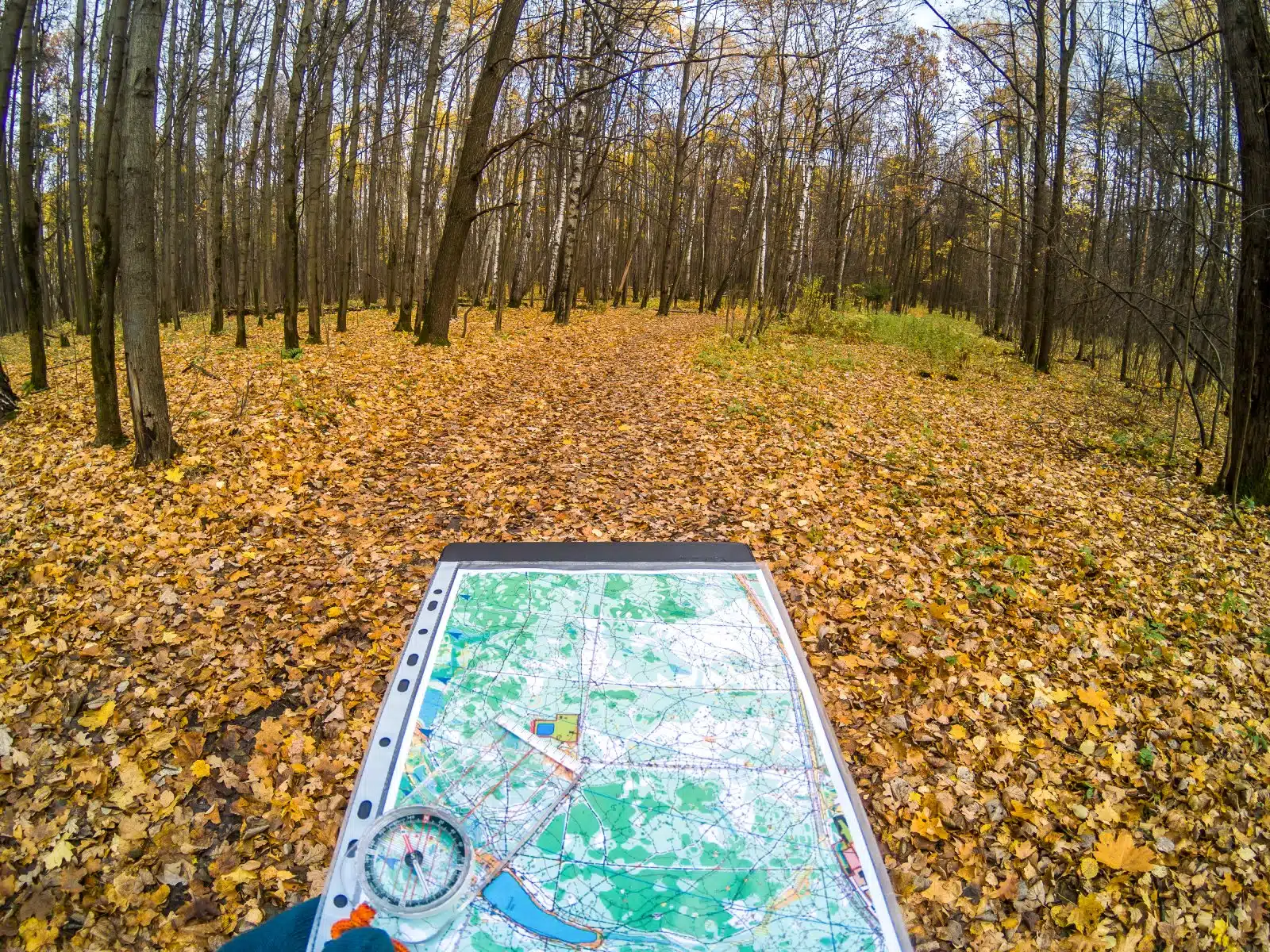
Image Credit: Shutterstock / AdelCorp
A topographic map is a detailed, accurate graphic representation of three-dimensional features on the Earth’s surface, showing elevation, terrain, and natural and man-made features. Learning to read a topographic map is foundational to practical navigation. Key elements include contour lines, scale, symbols, and the legend. Contour lines indicate the elevation and shape of the terrain, offering insights into the landscape’s steepness and difficulty. The map’s scale provides information on the distance between points, enabling accurate planning of routes and estimation of travel times.
Insider’s Tip: Spend time familiarizing yourself with the legend and symbols of a topographic map before your adventure. Practice interpreting the map’s features by comparing them with the actual landscape in a familiar area to build your skills in a low-risk environment.
Mastering the Compass
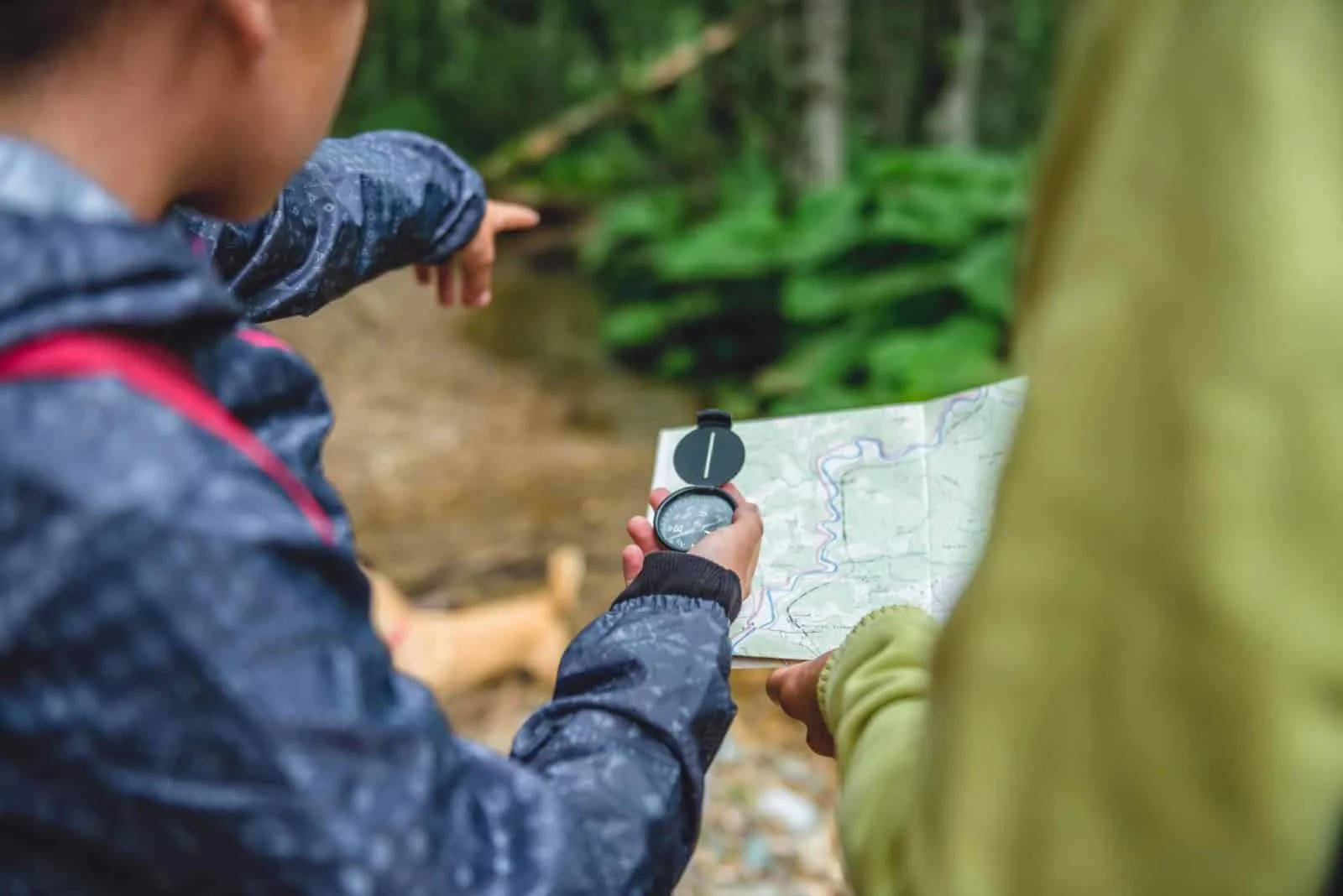
Image Credit: Shutterstock / Zivica Kerkez
A compass is a simple yet powerful tool for navigation, showing directions accurately when used correctly. It is crucial to understand its components, including the magnetic needle, baseplate, orienting arrow, and bezel. Learning to take a bearing, adjust for magnetic declination, and orient a map to the true north are fundamental skills for using a compass effectively. These abilities enable you to determine your direction of travel, locate your position on a map, and navigate through unfamiliar terrain confidently.
Insider’s Tip: Regularly practice using your compass with a map, even in well-known areas, to develop a natural feel for the tool and refine your navigation skills.
Planning Your Route
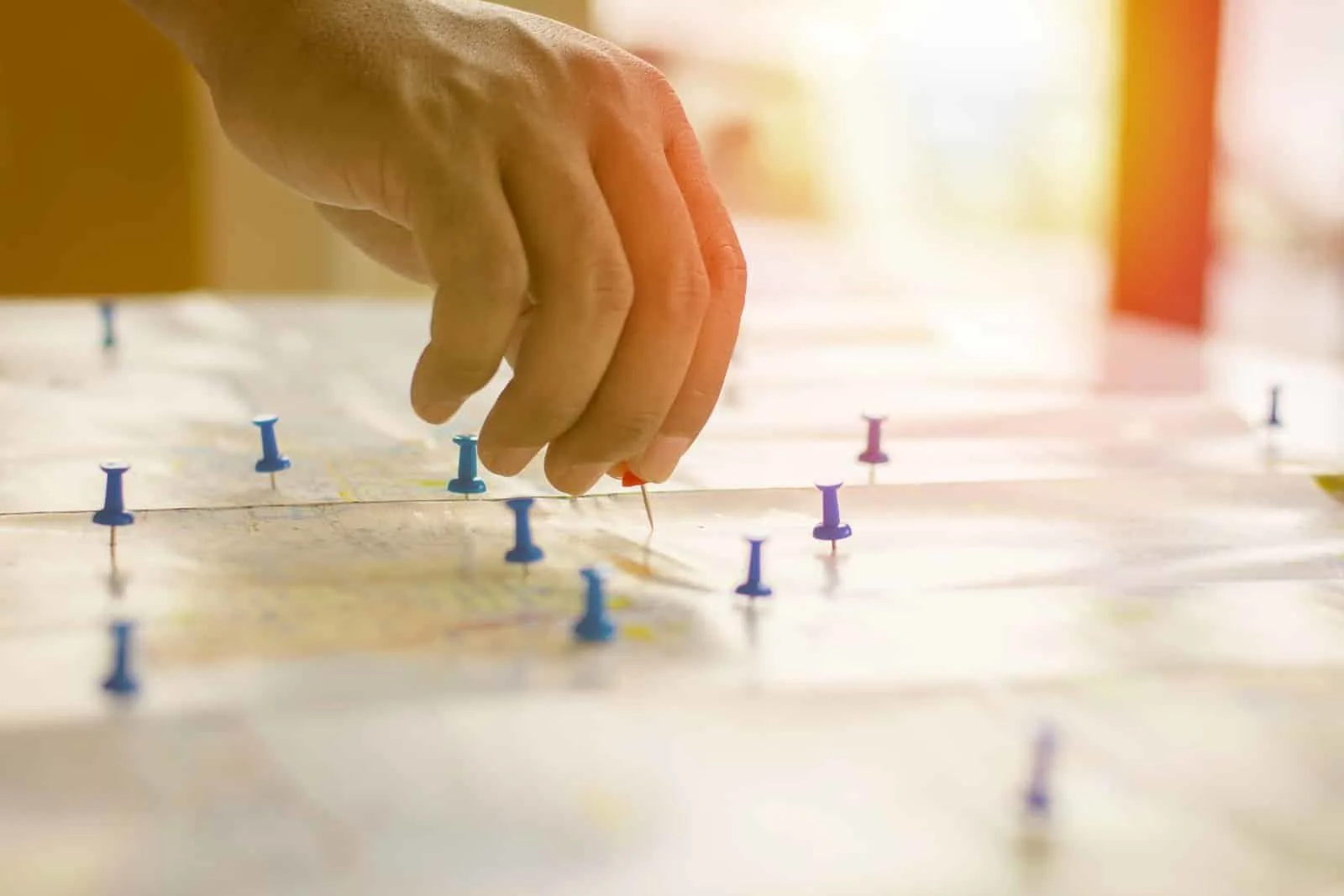
Image Credit: Shutterstock / CC7
Effective route planning is essential for a successful outdoor adventure. It involves studying your map to identify the starting point, destination, and points of interest along the way. Consider factors such as terrain difficulty, distance, estimated travel time, water sources, and potential hazards. Marking your route on the map and noting key navigational waypoints can help guide your journey and ensure you remain on track.
Insider’s Tip: Always have a plan B. Identify alternative routes and safe exit points in case of unexpected challenges or changes in weather conditions.
Navigating in Varied Terrain
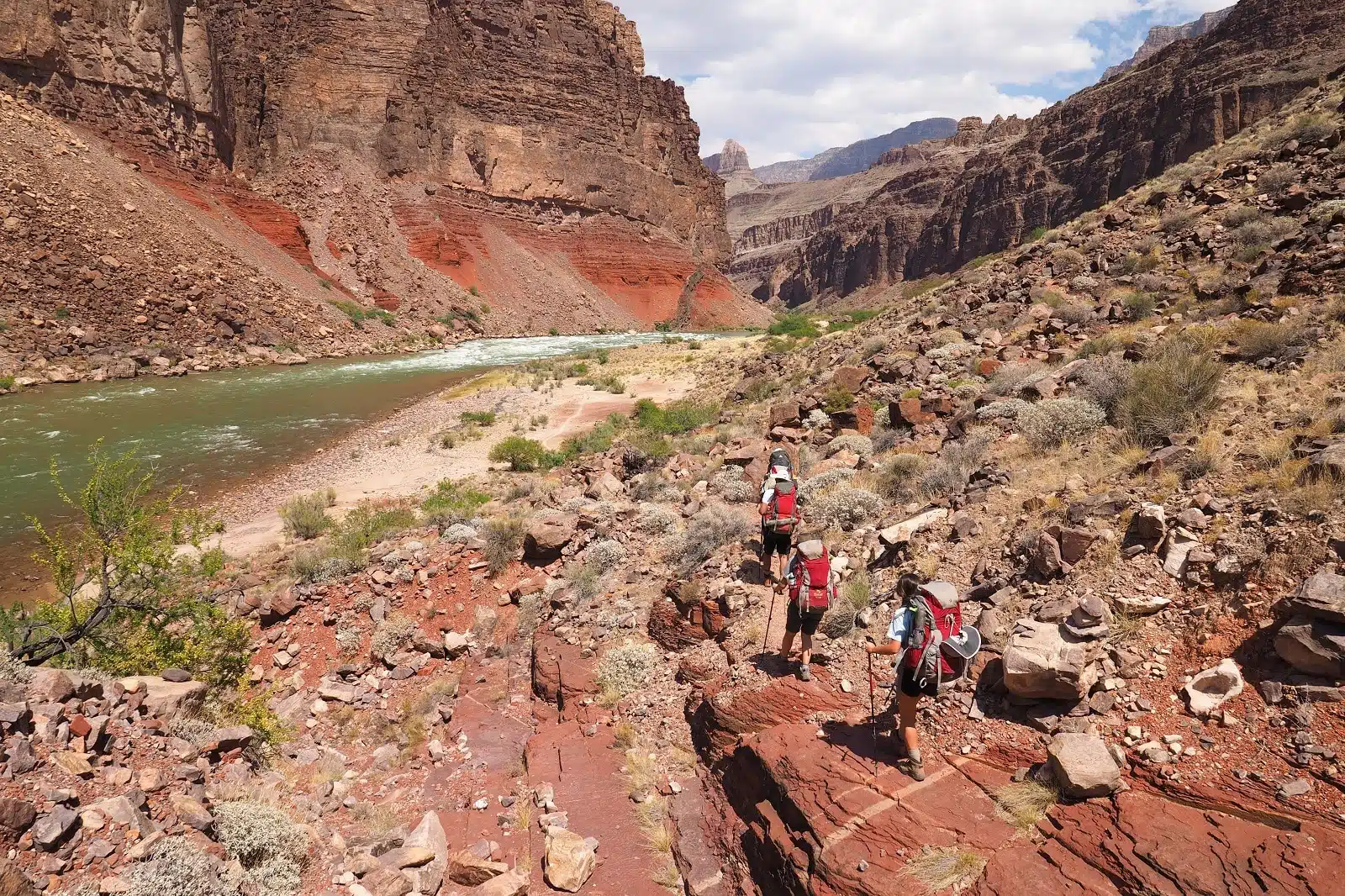
Image Credit: Shutterstock / Francisco Blanco
Different terrains present unique challenges and require specific navigation strategies. In dense forests, visibility is limited, making it essential to rely more heavily on compass bearings and pacing. In mountainous areas, elevation changes and contour lines become critical for understanding your route’s difficulty and navigating effectively. Open landscapes, such as deserts or plains, offer long sightlines but may lack distinct landmarks, requiring careful attention to compass navigation and sun position.
Insider’s Tip: Learn to adapt your navigation techniques to the terrain. For example, use “handrailing” along natural features like rivers or ridgelines in forested areas to guide your movement.
Estimating Distance and Time

Image Credit: Shutterstock / Kamila Starzycka
Accurately estimating the distance and time required to travel between points is vital for effective navigation and safety. Techniques such as pacing, where you count steps to measure distance, and timing, where you use known speeds over specific terrains, can help estimate travel times and distances accurately. Understanding how terrain affects your pace is crucial for realistic planning and avoiding overexertion.
Insider’s Tip: Develop a personal pacing card by measuring how many steps you take to cover a set distance in various terrains. This personalized reference will improve your distance estimation skills.
Using Natural Navigation Techniques
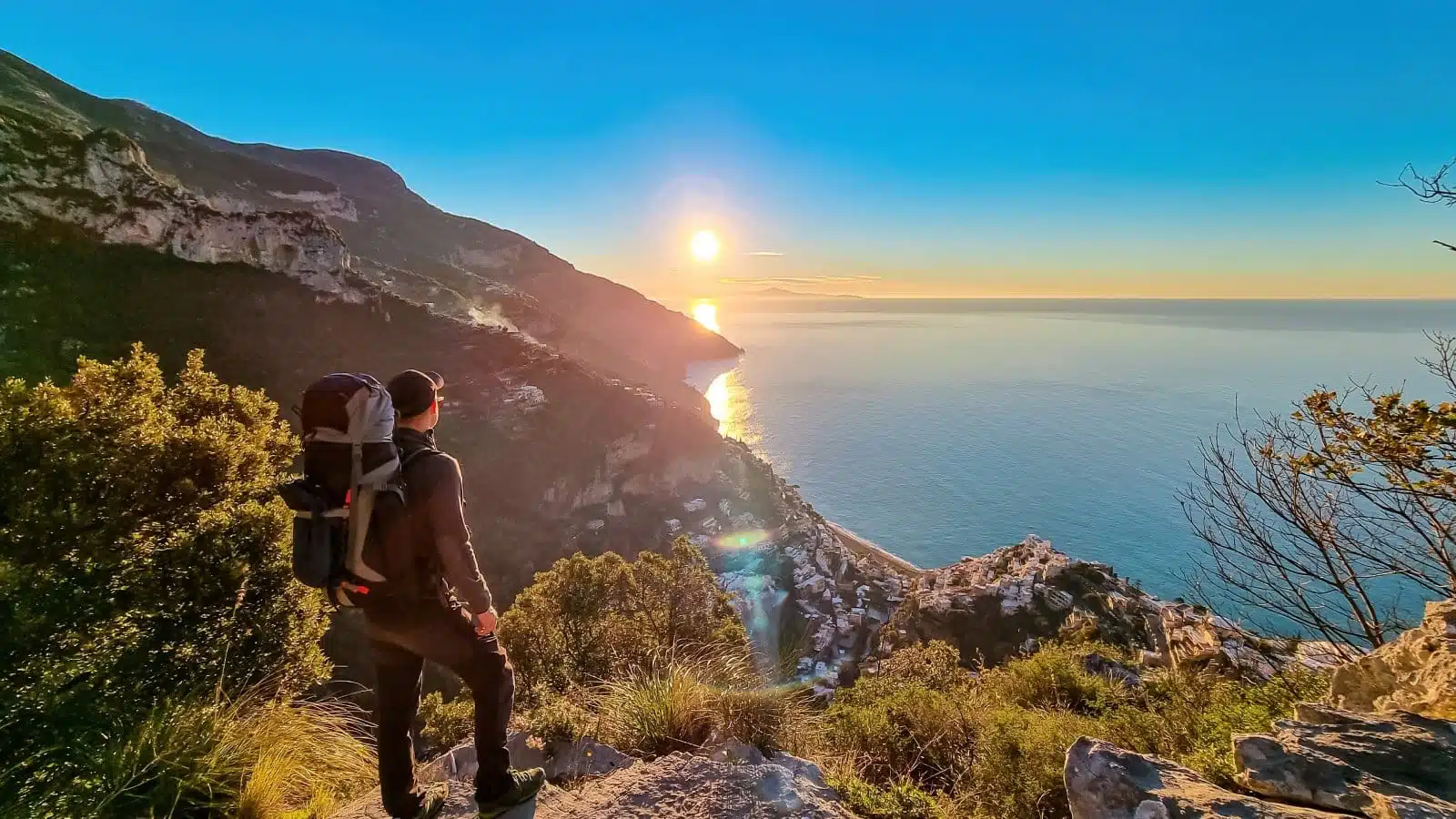
Image Credit: Shutterstock / Christopher Moswitzer
Natural navigation involves using environmental indicators, such as the sun’s position, stars, prevailing winds, and natural landmarks, to determine direction and location. These skills complement map and compass navigation, offering valuable insights and backup methods in challenging situations. For example, understanding how to locate the North Star or using the shadow stick method can provide direction when traditional tools are unavailable.
Insider’s Tip: Practice natural navigation techniques regularly. Simple observations, like noting the sun’s path or identifying moss growth on trees, can enhance your awareness and navigation abilities.
The Bottom Line

Image Credit: Shutterstock / Maridav
Mastering navigating with a map and compass is a rewarding journey that enhances your connection with the natural world and empowers your outdoor adventures. By understanding topographic maps, becoming proficient with a compass, and learning to plan and execute routes in varied terrains, you equip yourself with invaluable skills for exploration. Remember, the essence of traditional navigation lies not just in reaching your destination but in the confidence, self-reliance, and deepened appreciation for the environment that comes with truly understanding how to navigate the land. As you embark on your next adventure, take these skills with you and discover the satisfaction of navigating the world on your terms.
More From The Green Voyage
Top 10 Trending Travel Destinations 2024
6 Essential Banking Apps for International Travel – Managing Your Finances on the Go
Traveling With Kids – 10 Tips to Create Memorable Family Holidays
The post Learn How to Navigate with a Map and Compass first appeared on The Green Voyage.
Featured Image Credit: Shutterstock / Bogdan Sonjachnyj.
For transparency, this content was partly developed with AI assistance and carefully curated by an experienced editor to be informative and ensure accuracy.
Tips for Trip Success
Book Your Flight
Find an inexpensive flight by using Kayak, a favorite of ours because it regularly returns less expensive flight options from a variety of airlines.
Book Your Hotel or Special Accommodation
We are big fans of Booking.com. We like their review system and photos. If we want to see more reviews and additional booking options, we go to Expedia.
You Need Travel Insurance!
Good travel insurance means having total peace of mind. Travel insurance protects you when your medical insurance often will not and better than what you get from your credit card. It will provide comprehensive coverage should you need medical treatment or return to the United States, compensation for trip interruption, baggage loss, and other situations.Find the Perfect Insurance Plan for Your Trip
